Earth's Surface
The Earth's surface is the outermost layer of the planet, consisting of land, water, and the atmosphere. It is constantly changing due to natural processes such as erosion, weathering, and tectonic activity. Understanding the Earth's surface is important for studying various phenomena such as landscapes, climate, and human interactions with the environment.
Key Concepts
- Continents and Oceans: The Earth's surface is divided into continents and oceans. There are seven major continents and five major oceans.
- Landforms: The Earth's surface features various landforms such as mountains, plains, plateaus, and valleys. These are formed through processes like erosion, volcanic activity, and tectonic movements.
- Water Bodies: The Earth's surface includes rivers, lakes, and other bodies of water. They play a crucial role in the water cycle and are essential for sustaining life.
- Soil and Rocks: The top layer of the Earth's surface is covered with soil, which supports plant growth. Rocks, which make up the Earth's crust, also contribute to the surface features and geological processes.
- Atmosphere: The Earth's surface is connected to the atmosphere, which influences weather patterns and climate. The interaction between the surface and the atmosphere is crucial for maintaining environmental balance.
Study Guide
To understand the Earth's surface, students should focus on the following areas:
- Identify and label the continents and oceans on a world map.
- Examine different landforms and understand how they are formed. Create a poster or presentation showcasing various landforms.
- Investigate the water cycle and its impact on the Earth's surface. Conduct experiments or simulations to demonstrate the water cycle processes.
- Explore the types of rocks and soil found on the Earth's surface. Collect samples and analyze their properties.
- Study the relationship between the Earth's surface and the atmosphere. Research how atmospheric conditions affect the surface and vice versa.
By focusing on these key concepts and study guide, students can gain a comprehensive understanding of the Earth's surface and the processes that shape it.
[Earth's Surface] Related Worksheets and Study Guides:
.◂Science Worksheets and Study Guides Fourth Grade. Food webs/food chains
Study Guide Food webs/food chains
Food webs/food chains  Activity Lesson
Activity Lesson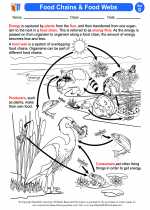 Food Chains & Food Webs
Food Chains & Food Webs  Worksheet/Answer key
Worksheet/Answer key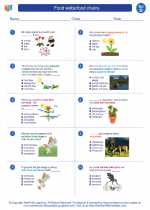 Food webs/food chains
Food webs/food chains  Worksheet/Answer key
Worksheet/Answer key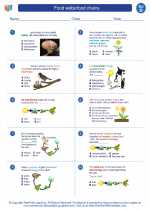 Food webs/food chains
Food webs/food chains  Worksheet/Answer key
Worksheet/Answer key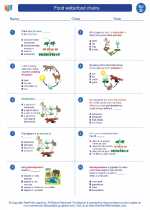 Food webs/food chains
Food webs/food chains  Worksheet/Answer key
Worksheet/Answer key Food Chains & Food Webs
Food Chains & Food Webs  Vocabulary/Answer key
Vocabulary/Answer key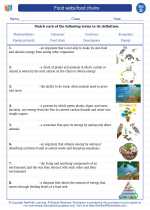 Food webs/food chains
Food webs/food chains  Vocabulary/Answer key
Vocabulary/Answer key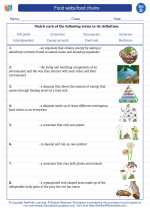 Food webs/food chains
Food webs/food chains  Vocabulary/Answer key
Vocabulary/Answer key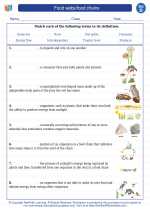 Food webs/food chains
Food webs/food chains 

 Activity Lesson
Activity Lesson
 Worksheet/Answer key
Worksheet/Answer key
 Worksheet/Answer key
Worksheet/Answer key
 Worksheet/Answer key
Worksheet/Answer key
 Worksheet/Answer key
Worksheet/Answer key
 Vocabulary/Answer key
Vocabulary/Answer key
 Vocabulary/Answer key
Vocabulary/Answer key
 Vocabulary/Answer key
Vocabulary/Answer key

The resources above cover the following skills:
Concepts of Life Science (SC1, SC2, SC3)
The student demonstrates an understanding that all organisms are linked to each other and their physical environments through the transfer and transformation of matter and energy by identifying examples of living and non-living things and the relationship between them (e.g., living things need water, herbivores need plants).
The student demonstrates an understanding that all organisms are linked to each other and their physical environments through the transfer and transformation of matter and energy by identifying a simple food chain of familiar plans and animals, diagramming how energy flows through it, and describing the effects of removing one link.
Concepts of Life Science: A student should understand and be able to apply the concepts, models, theories, facts, evidence, systems, and processes of life science. A student who meets the content standard should:
Develop an understanding that all organisms are linked to each other and their physical environments through the transfer and transformation of matter and energy.